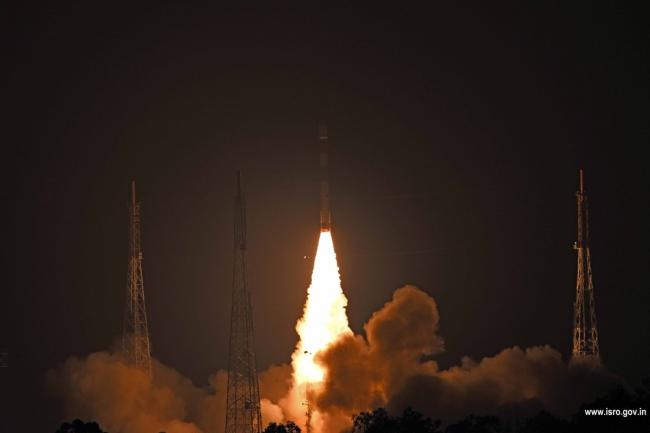
PSLV-C44 launches Microsat-R and Kalamsat-V2, ISRO tastes first success of 2019
New Delhi, Jan 25 (IBNS): Adding another feather to India's space research glory, Indian Space Research Organisation (ISRO) launched the world's lightest satellite on Thursday.
Apart from being lightweight, the satellite assumes significance as it has been built by Indian students.
The students work for a private organisation called "Space Kidz India" in Chennai.
The satellite weighs only 1.26 kg.
The space research body said in a statement: "India's Polar Satellite Launch Vehicle (PSLV-C44)successfully injected Microsat-R andKalamsat-V2 satellites into their designated orbits. The PSLV-C44 lifted off at 23:37Hrs(IST) on January 24, 2019 from the First Launch Pad at Satish Dhawan Space Centre SHAR,Sriharikota in its 46th flight."
About 13 minutes 26 secondsafter lift-off, Microsat-R was successfully injectedinto intended orbit of 274 km.After injection, two solar arrays of the satellite were deployed automatically and ISRO Telemetry Tracking & Command Network (ISTRAC) at Bengaluru assumed control of the satellite.
Subsequently,the fourth stage (PS4) of the vehicle was moved to a higher circular orbit of 453 km after two restarts of the stage, to establish an orbital platform for carrying out experiments. Kalamsat-V2, a student payload, first to use PS4 as an orbital platform, was taken to its designated orbit about 1 hour and 40 minutes after lift-off.
This flight marked the first mission of PSLV-DL, a new variant of PSLV with two strap-on motors.
In the previous PSLV launch on November 29, PSLV-C43 had successfully launched India’s HysIS as well as 30 customer satellites from abroad.
PM Modi congratulates Indian scientists:
Modi tweeted: "With this launch, India also becomes the first country to use the fourth stage of a space rocket as an orbital platform for micro-gravity experiments. @isro."
With this launch, India also becomes the first country to use the fourth stage of a space rocket as an orbital platform for micro-gravity experiments. @isro
— Narendra Modi (@narendramodi) January 25, 2019
In his post-launch address, Chairman Dr K Sivan said the PSLV-C44 mission was unique as it was for the first time ISRO used the last stage of the rocket as a platform to perform experiments in space.
“I hope the student community will make use of this opportunity being provided by ISRO. This new low cost technology will help students to conduct several inspiring experiments in space by attaching their instruments to the last stage of the rocket,” Dr Sivan said.
He congratulated Kalamsat-V2 team for their perfection in making satellites. “We must strive for science-oriented India. ISRO is open to all students across India. We want students to bring their satellites to us and we will launch them.Young scientists will shape the future of India,” Dr Sivan said. He also introduced the Kalamsat-V2 team.
Mission Director R Hutton thanked the entire PSLV-C44 team for their relentless efforts in making the launch successful.
Image: ISRO Twitter page
Support Our Journalism
We cannot do without you.. your contribution supports unbiased journalism
IBNS is not driven by any ism- not wokeism, not racism, not skewed secularism, not hyper right-wing or left liberal ideals, nor by any hardline religious beliefs or hyper nationalism. We want to serve you good old objective news, as they are. We do not judge or preach. We let people decide for themselves. We only try to present factual and well-sourced news.







